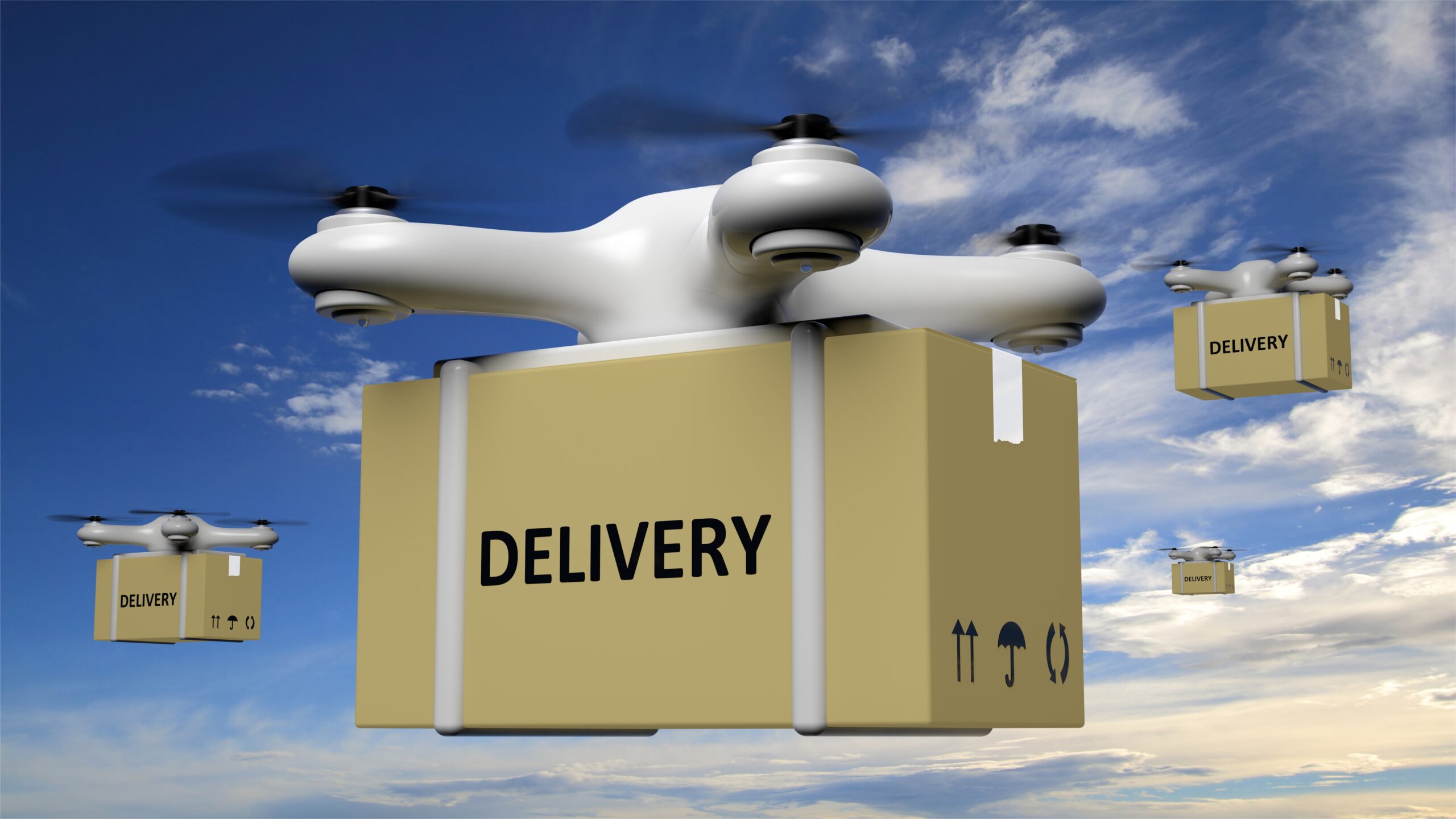In a move that could change the way we receive packages forever, Amazon has announced its ambitious plan to expand its drone delivery services to more cities in 2025. This bold step is part of Amazon’s ongoing efforts to push the boundaries of logistics and delivery systems, aiming to make package delivery faster, more efficient, and environmentally friendly. But what does this mean for consumers, businesses, and the future of delivery? Let’s dive deep into what Amazon’s drone delivery expansion entails and how it could shape the landscape of e-commerce.
What is Amazon’s Drone Delivery Service?
Amazon’s drone delivery service, branded as Prime Air, is a revolutionary approach to modernizing the logistics and shipping industry. It involves using unmanned aerial vehicles (UAVs), commonly known as drones, to deliver packages directly to customers. The primary goal of Prime Air is to reduce delivery times significantly, aiming for an impressive 30-minute window between the order being placed and the package landing on the customer’s doorstep. This ambitious plan promises to revolutionize the delivery experience by bringing a new level of speed and efficiency to the process.
These drones are not your typical flying robots. They are specifically designed and engineered to carry lightweight packages, typically weighing under five pounds. This weight limit ensures that the drones are agile, efficient, and capable of completing deliveries quickly. The majority of packages that Amazon delivers fall within this weight range, including small electronics, books, and everyday household items. By focusing on lightweight goods, Prime Air can maximize the number of deliveries per drone, thus optimizing operations and reducing the overall cost per delivery.
One of the key advantages of Amazon’s drone service is its ability to bypass the congestion and delays often associated with traditional delivery trucks. Drones can fly directly to their destinations without being affected by road traffic, weather conditions, or other obstacles that may delay land-based delivery methods. This not only speeds up delivery times but also helps Amazon maintain the high level of reliability and punctuality that customers have come to expect from its services.
In addition to improving speed and reliability, Amazon’s drone delivery service also seeks to provide a more sustainable and environmentally friendly alternative to traditional delivery trucks. Drones are powered by electricity, which means they generate fewer carbon emissions compared to the diesel or gasoline-powered trucks typically used for delivery. By shifting some of its deliveries to drones, Amazon aims to reduce its carbon footprint and contribute to a greener future for the logistics and e-commerce industries. This environmentally-conscious approach adds to the appeal of drone delivery, especially as more companies and consumers look for sustainable solutions to their shipping needs.
Why is Amazon Expanding Drone Delivery?
- Amazon has been testing its drone delivery system for several years, carefully conducting trials to refine and perfect the technology.
- The main reason for expanding the service is to keep up with the growing demand for fast, reliable, and efficient delivery solutions, which is becoming more critical as e-commerce continues to thrive.
- With the rise of e-commerce, customers have come to expect faster delivery times, and Amazon recognizes that drones can help meet this demand by offering quicker and more direct delivery options.
- The expansion of drone delivery aligns with Amazon’s commitment to improving customer experience by offering faster shipping times, which has become an increasingly important factor in consumer decision-making.
- Amazon also sees drones as an essential tool in revolutionizing the logistics industry, allowing for a more streamlined and automated process that reduces human involvement and increases operational efficiency.
- Expanding drone delivery is part of Amazon’s strategy to remain competitive in a rapidly evolving market, where quick delivery times and innovation are key differentiators between companies.
- The move also reflects Amazon’s efforts to be at the forefront of technological advancements, positioning the company as a leader in both e-commerce and logistics innovation.
- Drones offer the potential to reduce costs associated with traditional delivery methods, particularly by decreasing the need for ground-based vehicles, which can lead to long-term savings for Amazon.
- As consumers become more accustomed to fast delivery options, Amazon recognizes that drone services can play a crucial role in maintaining customer satisfaction and loyalty in a competitive market.
- Expanding drone delivery also allows Amazon to optimize its supply chain and meet the increasing demands of customers, who are increasingly expecting instant or near-instant delivery for their purchases.
The Timeline for the Expansion in 2025
| Year | Milestone | Details | Cities Targeted | Expected Impact |
| 2025 | Expansion Launch | Drone delivery services will be expanded to more cities across the United States. | Major urban and suburban areas to start with. | Increased access to fast and efficient deliveries. |
| 2025 | Increased Coverage | More regions will gain access to Prime Air services, improving convenience for customers. | Cities with high demand for faster delivery. | Enhanced customer satisfaction with quicker deliveries. |
| Mid-2025 | Service Improvement | Drone delivery services will be refined based on initial rollouts to ensure efficiency. | Initially targeted cities will see operational improvements. | Improved reliability and performance of drone delivery. |
| Late-2025 | Broader Expansion | Additional cities will be added to the service network, reaching a wider customer base. | Expanding into more rural or less-served regions. | Wider availability of faster, eco-friendly delivery services. |
| End of 2025 | Completion of First Phase | The first phase of expansion will be complete with Prime Air available in several cities. | Cities with a significant e-commerce presence. | A major step toward nationwide drone delivery integration. |
The Technology Behind Amazon’s Drones
Amazon’s drones are far from ordinary flying machines; they are advanced, cutting-edge devices built with sophisticated technology that ensures efficiency, safety, and precision in their operations. These drones are designed to handle the complexities of modern package delivery, offering a level of automation and intelligence that is essential for ensuring smooth, reliable service.
One of the standout features of Amazon’s drones is their autonomous flight capability. This means that the drones can fly, navigate, and deliver packages to their destinations without the need for constant human control. By using advanced algorithms and AI-driven systems, these drones can plan their flight paths, avoid obstacles, and make real-time adjustments to ensure the package reaches the correct location with minimal delay. This level of autonomy is crucial for scaling up drone delivery services, as it reduces human intervention and increases efficiency in the delivery process.
Safety is another key consideration in the design of Amazon’s drones. Equipped with safety sensors, these drones are able to detect and avoid obstacles in their path, ensuring safe operations even in crowded or complex environments. These sensors help the drones to navigate around buildings, trees, and other potential hazards, which is particularly important when flying in urban or suburban areas where space can be limited. With these sensors in place, Amazon’s drones can fly with a high level of confidence, knowing that they can safely avoid any threats to their flight path.
Additionally, real-time tracking is a critical feature that provides transparency and peace of mind to customers. Through Amazon’s tracking system, users can monitor their package as it travels toward its destination. This live tracking system not only allows customers to see exactly where their package is but also provides them with an estimated delivery time. This enhances the overall customer experience by offering visibility into the process and ensuring that they know exactly when to expect their delivery.
Which Cities Will Benefit From the Expansion?
- Amazon has not yet announced the specific cities that will receive drone delivery services, but the company plans to initially focus on urban and suburban areas.
- Urban areas will be a top priority for expansion due to their dense populations and high demand for fast, reliable deliveries.
- These urban areas typically have more infrastructure and logistics hubs, making them ideal for implementing drone delivery services that can quickly process and deliver packages.
- Suburban areas will also benefit from this expansion as they are often located near major delivery hubs, allowing drones to quickly transport packages to areas just outside of dense urban centers.
- By targeting these areas, Amazon can serve a large and diverse customer base, ensuring that a wide range of customers can experience the convenience of drone deliveries.
- This strategy also allows Amazon to leverage existing logistics infrastructure, optimizing drone operations while minimizing potential challenges in areas with less developed delivery networks.
The Environmental Benefits of Drone Delivery
| Environmental Impact | Traditional Delivery Trucks | Drone Delivery | Comparison | Expected Outcome |
| Power Source | Gasoline/Diesel-powered vehicles | Electric-powered drones | Drones use clean energy sources | Reduced greenhouse gas emissions. |
| Carbon Emissions | High emissions from fossil fuels | Low emissions due to electric motors | Drones contribute to lower emissions | Smaller carbon footprint from deliveries. |
| Traffic Congestion | Contributes to road traffic congestion | Avoids roads, flying directly to destinations | Drones avoid roadways, reducing congestion | Reduced traffic and less urban pollution. |
| Fuel Efficiency | Lower fuel efficiency in large vehicles | High energy efficiency in drones | Drones use less energy for deliveries | Improved energy use per package delivered. |
| Noise Pollution | High noise from large trucks | Quieter operation due to smaller motors | Drones produce significantly less noise | Less noise pollution in residential areas. |
The Impact on Traditional Delivery Methods
Amazon’s expansion into drone delivery services is poised to create significant changes in the way packages are delivered. One of the most noticeable effects could be a reduction in traffic congestion. By using drones instead of traditional delivery trucks, Amazon would be able to cut down on the number of vehicles on the road. This reduction in traffic could lead to less congestion in cities, making commutes easier for everyone and potentially lowering pollution levels caused by vehicles stuck in traffic. The shift away from trucks would also mean fewer emissions, contributing to cleaner air in urban areas.
Another important change will be faster deliveries. Drones are not limited by roadways, traffic signals, or other road-based obstacles. They can fly directly to their destination, which allows them to avoid the delays that often come with traditional delivery methods. This means that packages can be delivered much faster, often within 30 minutes, which is a dramatic improvement over the hours or days that typical delivery services may take. As a result, customers will experience quicker service and greater satisfaction, especially in fast-paced urban environments.
However, the rise of drone deliveries could also lead to job changes in the traditional delivery sector. While new jobs related to drone management, maintenance, and operation are likely to emerge, they may not fully replace the jobs that could be displaced. Traditional delivery drivers, for example, could see their roles diminished as drones take over some of their duties. This shift in the workforce could create a need for retraining and reskilling for those affected by the change, ensuring that workers can transition into new roles in the drone and technology sectors.
Finally, the introduction of drones could lead to a shift in delivery infrastructure. Traditional delivery methods rely heavily on a network of roads, distribution centers, and logistics hubs. Drones, however, require entirely different infrastructure, such as landing zones and charging stations, which would need to be set up in strategic locations. This could lead to the development of new delivery networks designed specifically for drones, further changing the landscape of the logistics industry.



